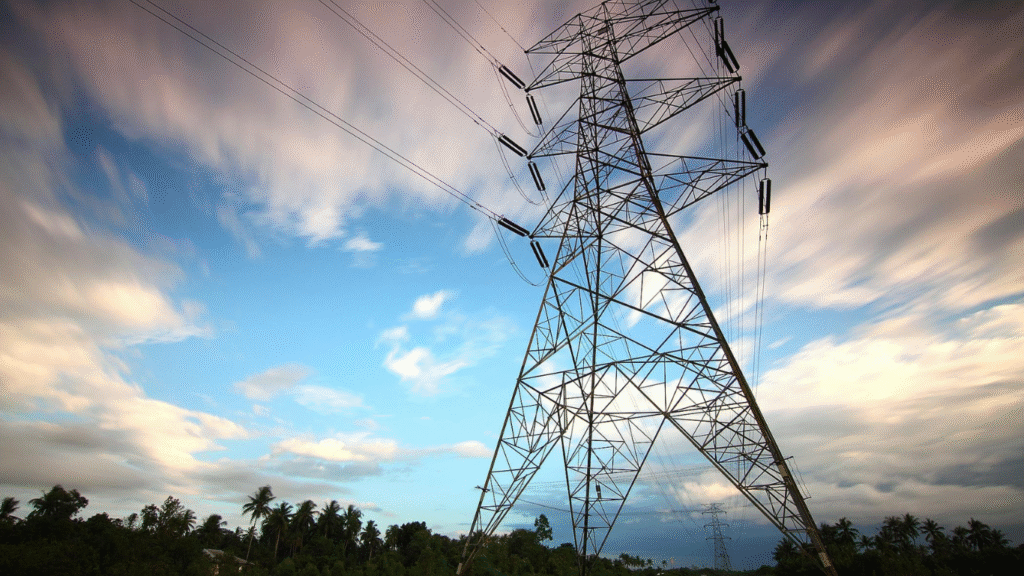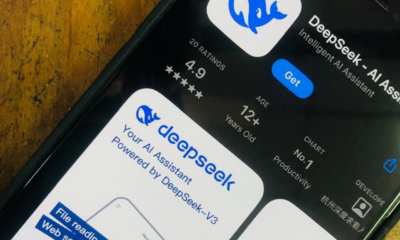Tech News
Top 5 Engineering YouTube Channels You Should Follow

As an engineering student, the classroom is just the beginning. Real learning often happens outside lectures. Whether studying mechanical, electrical, civil, or software engineering, YouTube has become a powerful tool to boost skills. From in-depth theory to practical applications, tutorials to career tips, some YouTube channels can help you become a better engineer. They break down complex ideas, explain real-world problems, and even inspire innovation. But with so many options, where should you start? Don’t worry. We’ve done the work for you. Here are the top 5 engineering YouTube channels every student should follow to stay ahead, learn smarter, and grow their passion.
Practical Engineering
This channel focuses on civil and structural engineering. Topics include water systems, bridges, tunnels, and failures in infrastructure. The creator, Grady, explains problems and solutions in a clear, engaging way. It’s great for those who love solving large-scale, real-world problems.
Why follow: Ideal for electrical, civil, and environmental engineering students who want clarity on real-world systems.
The Engineering Mindset
This channel is packed with clear animations and diagrams. It covers topics like HVAC systems, electrical circuits, and PLCs. If you’re a visual learner, this channel is gold. It bridges the gap between textbooks and practical knowledge.
Why follow: Especially useful for electrical, mechanical, and automation engineers.
Learn Engineering
This channel is perfect for engineering theory. It covers mechanical, civil, electrical, and automotive topics using detailed animations. You can find lessons on turbochargers, transformers, gear systems, and much more. It’s like watching your textbook come to life.
Why follow: Perfect for understanding complex topics visually and clearly.
Engineering Explained
Hosted by a mechanical engineer, this channel focuses mainly on automotive engineering. You’ll learn about engines, aerodynamics, transmission systems, and more. Even if you’re not into cars, it helps explain mechanical principles in real-world settings.
Why follow: Perfect for mechanical engineers or anyone curious about how machines work.
Real Engineering
Real Engineering dives deep into engineering concepts with a storytelling approach. You’ll find videos on how jet engines work, the physics behind drones, or the design of Formula 1 cars. The visuals are clean, and the information is reliable.
Why follow: Great for aerospace, mechanical, and general engineering students who want to learn how engineering powers our world.
As engineering students, it’s easy to feel overwhelmed. But learning doesn’t always have to be boring. These engineering YouTube channels make it easier and more exciting to grasp difficult concepts, learn from real engineers, and stay updated with modern trends. So next time you’re stuck with a tough subject or just curious about how things work, open YouTube not for entertainment, but for real education. Subscribe to a few of these channels. Watch their videos. Take notes. Apply what you learn. Engineering is about solving problems. And with these channels, you’ll be better equipped to do just that, smarter and faster.
Tech News
Samsung Unveils Game-Changing Micro RGB TV

Samsung has taken a bold step in TV innovation. Their new Micro RGB TV blends cutting-edge display tech with massive screen size. It promises vivid colors, deep contrast, and a price that undercuts high-end Micro LED models. This could be the start of a new era in premium home entertainment.
Samsung is redefining TV tech. They just launched their first Micro RGB TV. The debut model is a massive 115-inch screen. It hits shelves first in South Korea. And it carries a hefty price tag—about $32,362. This TV brings a new kind of backlight. It uses ultra-tiny red, green, and blue LEDs. Each one is under 100 µm in size. This allows each micro-LED to be controlled on its own. That means sharper contrast. And more accurate colors. The magic runs deeper. Samsung’s new Micro RGB AI engine analyzes every frame. It tweaks color output in real time. Even dull scenes get a vivid lift. That makes the picture more immersive.
How Much does a Micro RGB TV cost?
It’s also cheaper to make than MicroLED. Samsung’s 115-inch Micro RGB model costs around $32,362. That’s way less than its 110-inch MicroLED TV, which sells for $150,000 in the U.S. Specs are impressive. The display is 4K with a 144 Hz variable refresh rate. That’s great for gaming. HDR10+ support ensures rich range. It uses AI upscaling to improve lower-res content. The sound is powerful—70 W in a 4.2.2 setup. Dolby Atmos makes it enveloping.

Connectivity? Plenty. Four HDMI 2.0 ports. Two USB-A ports. Wi-Fi and Bluetooth. It even works as a Matter controller. Philips Hue users can sync their lights to what’s on screen. Samsung teased this tech at CES 2025. Now it’s real. South Korea gets it first. The U.S. launch is next. More regions and sizes are coming soon. Samsung isn’t alone in this space. Sony showed off something similar—General RGB LED backlight. Hisense introduced a 116-inch TriChroma LED TV. Both use RGB micro-LEDs to boost color.
But Samsung claims an edge. Their Micro RGB covers 100 percent of the BT.2020 color space. Hisense hits 97 percent. The difference may matter to color-critical viewers. This launch hints at a shift. Micro RGB could bridge the gap between Mini LED and MicroLED. It offers top-tier picture quality. At a more accessible price. For now, only a massive 115-inch model is available. But the promise is clear. Big screens, bold color, smarter lighting control. And more to come.
Tech News
Central U.S. and New England Face Elevated Risk of Summer Power Shortages

As the summer of 2025 approaches, significant portions of the United States, particularly the central regions and New England, are bracing for potential electricity power shortages. This concern arises from a confluence of factors. Including rising energy demand, the retirement of traditional power plants, and the challenges associated with integrating renewable energy sources.
Rising Demand Meets Aging Infrastructure
The North American Electric Reliability Corporation (NERC) has highlighted that electricity demand is projected to increase by approximately 10 gigawatts compared to the previous summer. This surge is mainly due to the fast growth in energy-heavy sectors. These include data centers, factories, and electric vehicles. At the same time, over 7 gigawatts of fossil fuel power have been shut down. This raises concerns about meeting peak demand.
Shifting to solar and wind is good for the environment. But it makes the power supply less steady. These sources depend on the weather. Large battery systems are not yet enough to store extra energy. At the same time, old fossil-fueled plants are shutting down. This makes people question whether the grid can handle extreme weather.

Image credits – pexels.com
Regional Vulnerabilities
Several regions are identified as particularly vulnerable.
Texas (ERCOT): Faces potential shortfalls during early evening hours when solar generation decreases but demand remains high.
-
Southwest Power Pool (SPP): States like Montana and Nebraska could experience reliability issues due to the variability of wind power.
-
Midcontinent Independent System Operator (MISO): Has seen a reduction in supply owing to retiring power plants, placing it at high risk even during normal peak demand periods.
Contributing Factors
Beyond the retirement of traditional power plants, other factors exacerbate the risk of power shortages:
-
Delayed Infrastructure Development: Utilities face challenges in developing new power plants and upgrading transmission infrastructure, hindered by supply chain issues and a shortage of skilled technicians.
-
Extreme Weather Events: Meteorologists predict another particularly hot and dry summer, similar to previous record-breaking years, which could strain the grid further.
-
Integration of Renewable Energy: While approximately 30 gigawatts of solar and 13 gigawatts of battery storage were added over the past year, the lack of new transmission infrastructure hampers the effective distribution of this energy.
Looking Ahead
The current energy landscape underscores the need for a balanced approach that ensures reliability while transitioning to cleaner energy sources. Policymakers, industry leaders, and stakeholders must collaborate to accelerate the development of infrastructure, enhance grid resilience, and implement strategies that address both current and future energy demands.
Tech News
Do We Really Need 6G Internet?

Even as 5G networks continue to expand around the world, conversations about 6G are already gaining momentum. This rapid shift raises an important question among humans. Do we truly need a new generation of wireless technology so soon? Some experts argue that 5G’s capabilities are more than enough for today’s demands. Others believe that 6G could unlock groundbreaking advancements in communication, artificial intelligence, and even climate monitoring. As the debate grows louder, one thing becomes clear. We must ask whether 6G is a true necessity or simply an incremental step forward.
What is 6G?
6G is the next generation of wireless technology expected to launch around 2030. Operates with terahertz frequencies and offers ultra-low latency, ultra-fast speed, and a large amount of device connectivity. Researchers are exploring its potential applications in advanced AI and other applications like environmental sensing.

Capabilities of 6G
Faster Speeds and lower latency
6G could provide speeds up to 100 times faster than 5G. This could make real-time applications like augmented reality and remote surgery seamless. A lower latency of below one millisecond would enhance machine-to-machine (M2M) communication, making smart cities and industries more efficient.
Environmental Monitoring
6G could be capable of detecting greenhouse gases. The terahertz frequencies used in 6G are absorbed by atmospheric gases, allowing sensors to detect their presence and concentration. This could help track air pollution and climate change in real-time, providing valuable environmental insights.
Artificial Intelligence-driven communication
Unlike traditional networks that rely on fixed protocols, 6G could integrate artificial intelligence to optimize network traffic dynamically. This would allow devices to infer missing data instead of waiting for retransmission, reducing bandwidth use and energy consumption. Researchers are exploring “semantic communications,” where machines understand and process information instead of simply transmitting raw data. This could transform how devices interact in the IoT world.
Expanding Connectivity
6G aims to bridge the digital divide by providing high-speed internet in remote and underserved areas. With its ability to transmit data at ultra-high frequencies, it could offer seamless global coverage through satellite and aerial networks. This could benefit industries like agriculture, logistics, and disaster management.
Do we really Need It?
Still, 5Gis not yet fully deployed, and many of its promised benefits, such as smart cities and autonomous driving, are in early stages. Critics argue that rather than rushing into 6G. We should focus on optimizing 5G and making it more energy-efficient and widely available. Developing 6G networks will require massive investments in new infrastructure. Terahertz waves have a very short range, meaning more base stations and repeaters will be needed. This could lead to higher costs for telecom companies and consumers. While 6G could improve energy efficiency through AI-driven optimization, the initial rollout may increase overall power consumption due to the need for dense networks of antennas and processing power. Sustainability concerns remain a challenge. With increasing reliance on AI and interconnected devices, cybersecurity risks will also grow. New encryption techniques and regulatory measures will be needed to prevent cyber threats in a world dominated by intelligent machines and ultra-fast data transmission.

6G has the potential to revolutionize communication, AI integration, and environmental monitoring. However, whether it is truly necessary depends on how effectively we utilize 5G in the coming years. If 5G can meet most of our needs, a move to 6G might be less urgent. But if we aim for a future where machines reason intelligently, data flows instantly, and connectivity reaches every corner of the planet, then 6 G could be the next crucial step.
So, do we really need 6G? The answer depends on whether we want an incremental upgrade or a complete transformation of digital communication.
-

 Industry Insights9 months ago
Industry Insights9 months agoElectrical engineering career paths in 2025
-

 Tech Reviews10 months ago
Tech Reviews10 months agoTop 5 Laptops for an Engineering Student
-

 Tech News10 months ago
Tech News10 months agoWhat Happened to the Chat GPT? – Chat GPT Currently Down!
-

 Tech Reviews10 months ago
Tech Reviews10 months ago5 Cool Tech Gifts for this Christmas Season 2024
-

 Tech News2 months ago
Tech News2 months agoSamsung Unveils Game-Changing Micro RGB TV
-

 Tech News8 months ago
Tech News8 months agoWhy DeepSeek is Making Tech Giants Nervous
-

 How-To Guides7 months ago
How-To Guides7 months agoHow Do Engineers Build Underwater Constructions?
-

 Tech News7 months ago
Tech News7 months agoGoogle is bringing lock screen widgets to Android 16 in this year











